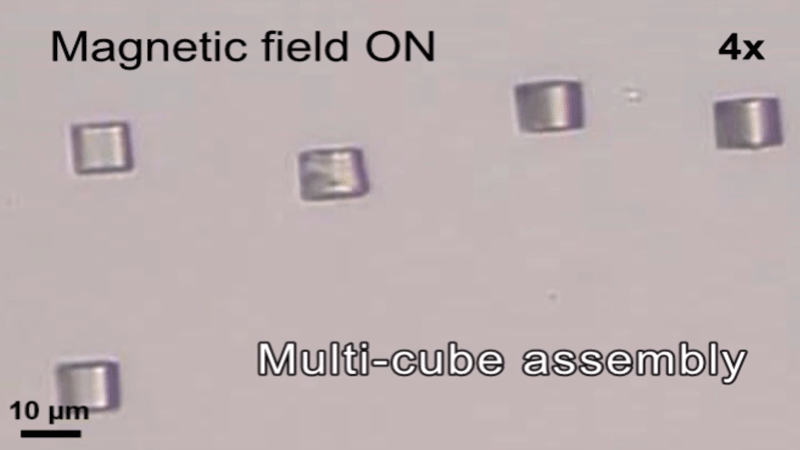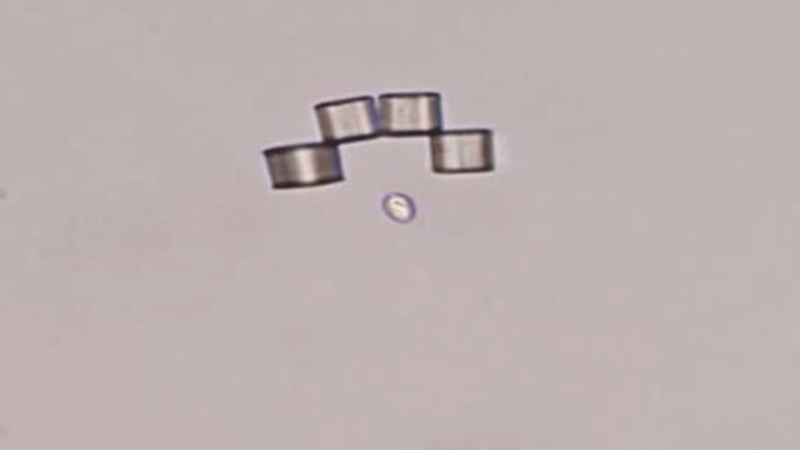These tiny modular ‘microbots’ can change shape to capture single cells

In a video out of North Carolina State University and Duke, five tiny cubes float freely under a microscope. Suddenly two pairs snap together, before all five combine into a single unit. Once together, they bend around a hinge, snapping together like Pac-Man’s jaws. The cubes approach a small, circular object — a single yeast cell — using the opening and closing motion to propel themselves forward. They snap closed, entrapping the single cell, before opening back up and letting it float away.
The researchers refer to the polymer cubes as “microbot origami,” tiny, modular objects that can be reconfigured into countless shapes. Each cube has a single side covered in a metallic coating, allowing researchers to manipulate their shape and movement using a series of electromagnet that surround the microscope. The devices were designed to mimic the way protein strands fold in nature — and like those objects, the microrobots’ shape determines how they fold.

In the near term, the microbots could prove useful research tools. By interacting with objects under the microscope, the blocks could offer insight into unfamiliar materials. “Right now this is a tool for investigating material on the micro-level,” the paper’s co-author Orlin Velev told TechCrunch. “It’s very easy to take a big material and perform all kinds of mechanical tests. But it’s much more difficult to pinch one single vesicle at a time.”

The research shares some common characteristics with other small origami robots being developed at schools like MIT, applying it to a much smaller, micrometer scale. And like those projects, these microbots could also have some potentially useful medical applications down the road. Doctors could use them to manipulate objects on a small scale or isolate single cells for testing purposes.
The researchers also believe that they could also be useful in the creation of biomedical devices like artificial muscles, performing necessary movements on a cellular level.
Attractive section of content. I simply stumbled upon your blog and in accession capital to claim that I acquire actually enjoyed account your weblog posts.
Anyway I’ll be subscribing on your augment and even I achievement
you access persistently rapidly.